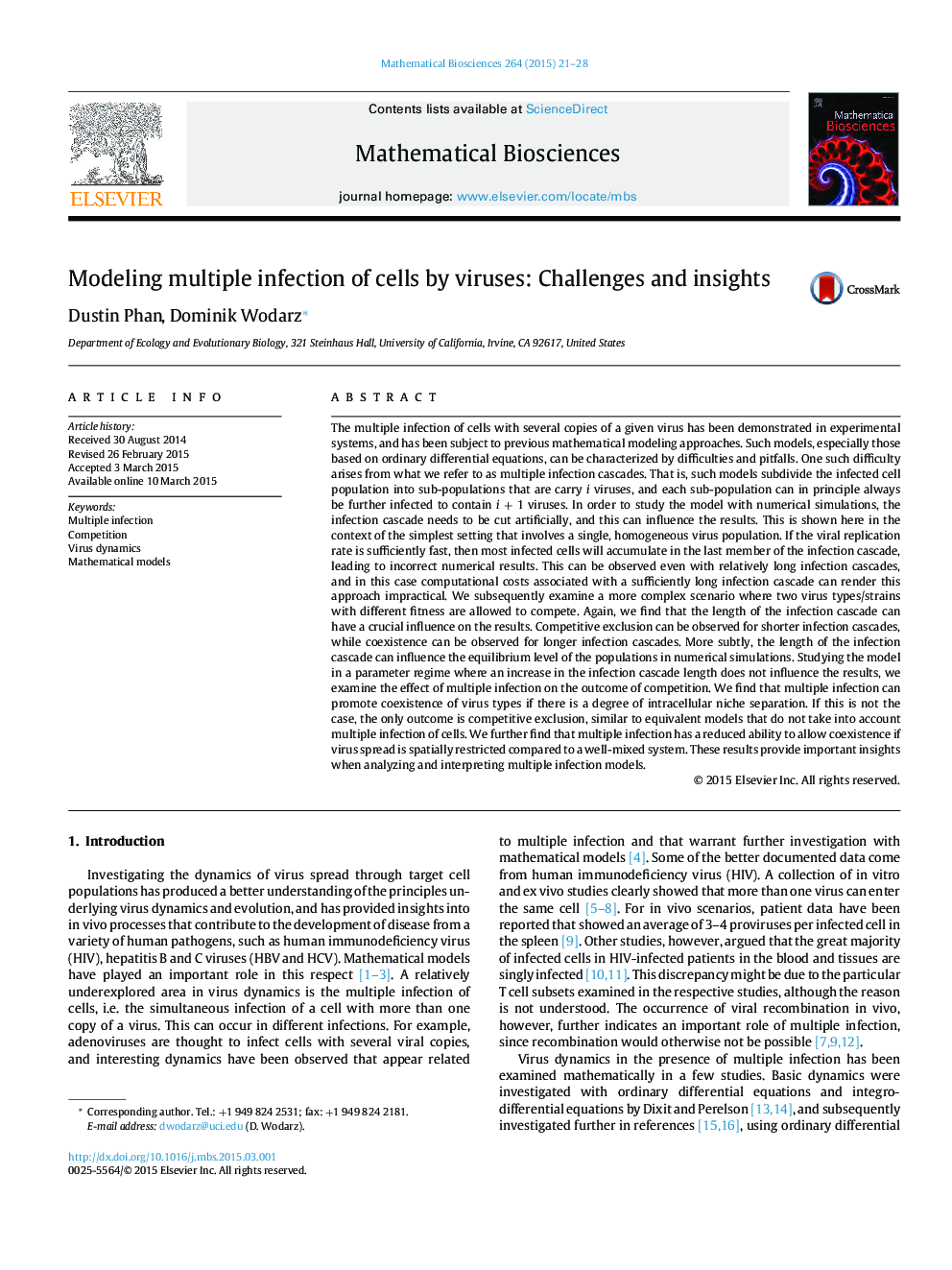| کد مقاله | کد نشریه | سال انتشار | مقاله انگلیسی | نسخه تمام متن |
|---|---|---|---|---|
| 6371943 | 1624016 | 2015 | 8 صفحه PDF | دانلود رایگان |
- Models capturing multiple infection of cells are studied.
- Basic dynamics are investigated.
- Competition dynamics are investigated.
- Details of the model formulation are found to influence results.
The multiple infection of cells with several copies of a given virus has been demonstrated in experimental systems, and has been subject to previous mathematical modeling approaches. Such models, especially those based on ordinary differential equations, can be characterized by difficulties and pitfalls. One such difficulty arises from what we refer to as multiple infection cascades. That is, such models subdivide the infected cell population into sub-populations that are carry i viruses, and each sub-population can in principle always be further infected to contain i + 1 viruses. In order to study the model with numerical simulations, the infection cascade needs to be cut artificially, and this can influence the results. This is shown here in the context of the simplest setting that involves a single, homogeneous virus population. If the viral replication rate is sufficiently fast, then most infected cells will accumulate in the last member of the infection cascade, leading to incorrect numerical results. This can be observed even with relatively long infection cascades, and in this case computational costs associated with a sufficiently long infection cascade can render this approach impractical. We subsequently examine a more complex scenario where two virus types/strains with different fitness are allowed to compete. Again, we find that the length of the infection cascade can have a crucial influence on the results. Competitive exclusion can be observed for shorter infection cascades, while coexistence can be observed for longer infection cascades. More subtly, the length of the infection cascade can influence the equilibrium level of the populations in numerical simulations. Studying the model in a parameter regime where an increase in the infection cascade length does not influence the results, we examine the effect of multiple infection on the outcome of competition. We find that multiple infection can promote coexistence of virus types if there is a degree of intracellular niche separation. If this is not the case, the only outcome is competitive exclusion, similar to equivalent models that do not take into account multiple infection of cells. We further find that multiple infection has a reduced ability to allow coexistence if virus spread is spatially restricted compared to a well-mixed system. These results provide important insights when analyzing and interpreting multiple infection models.
Journal: Mathematical Biosciences - Volume 264, June 2015, Pages 21-28
